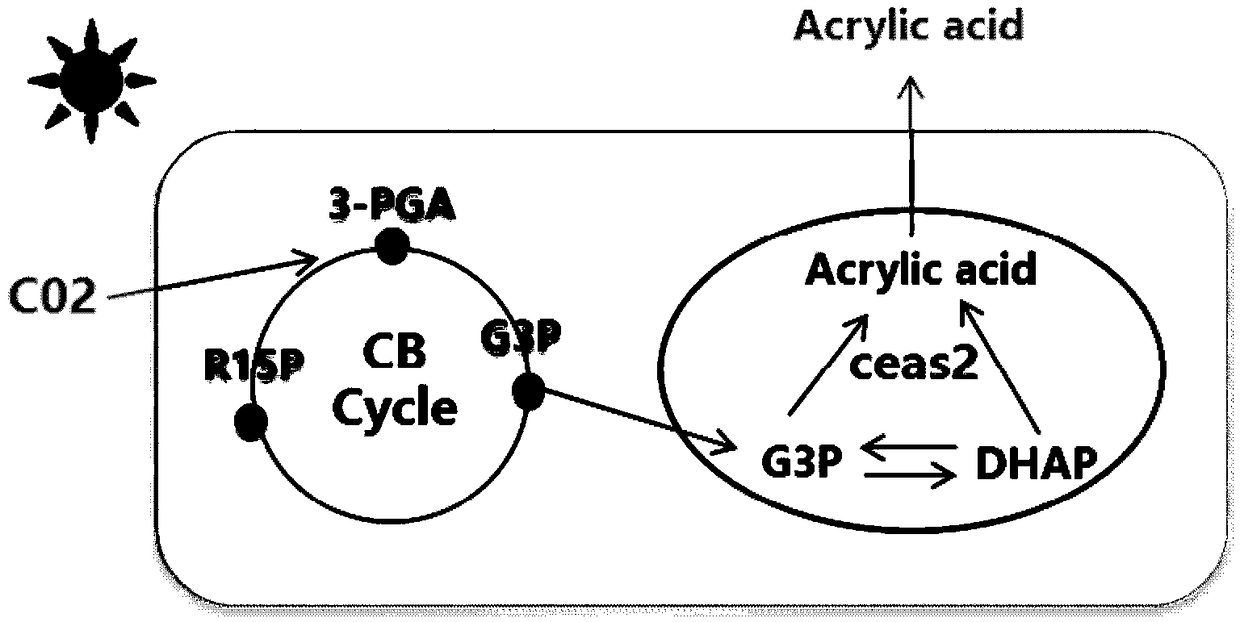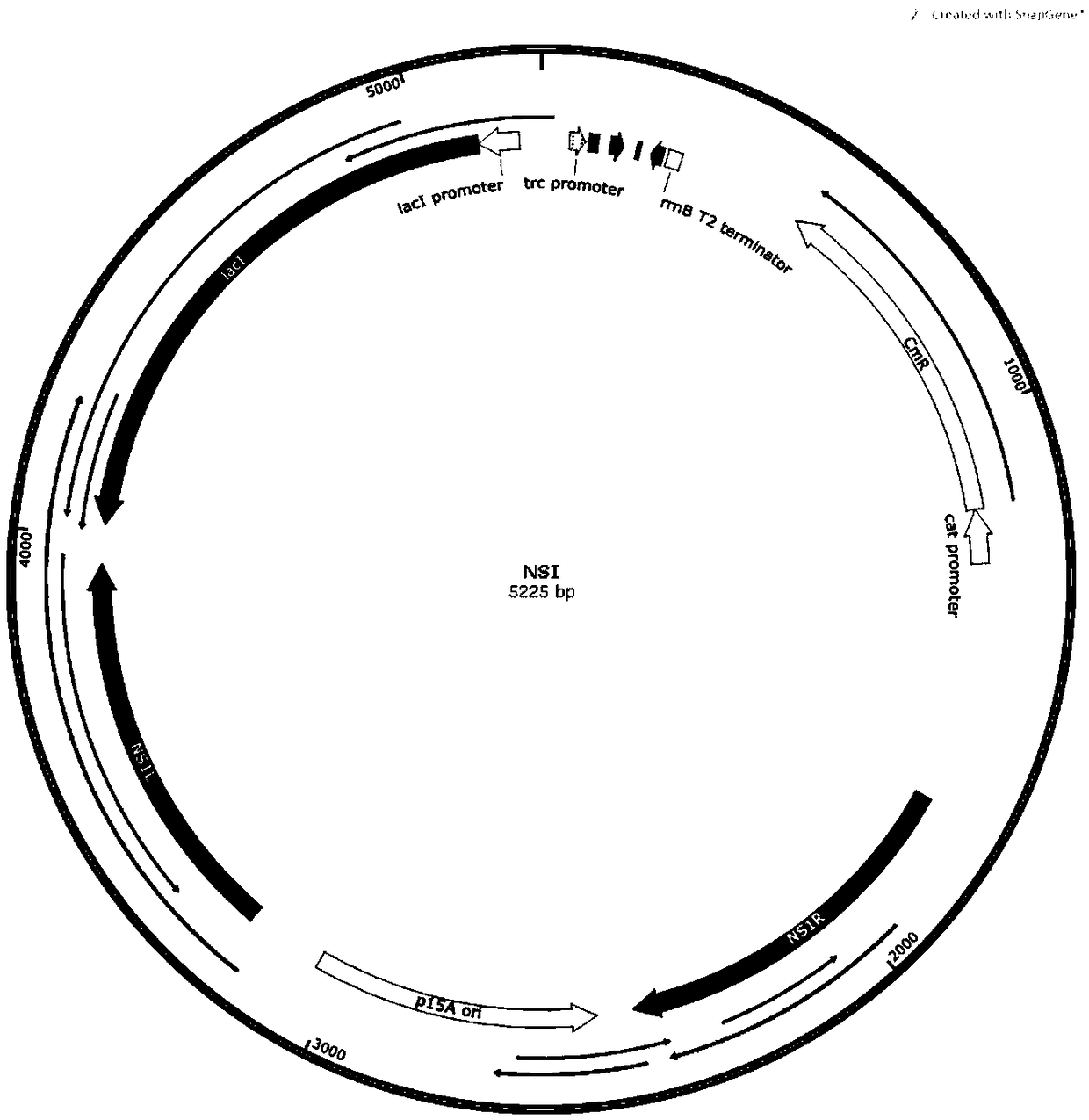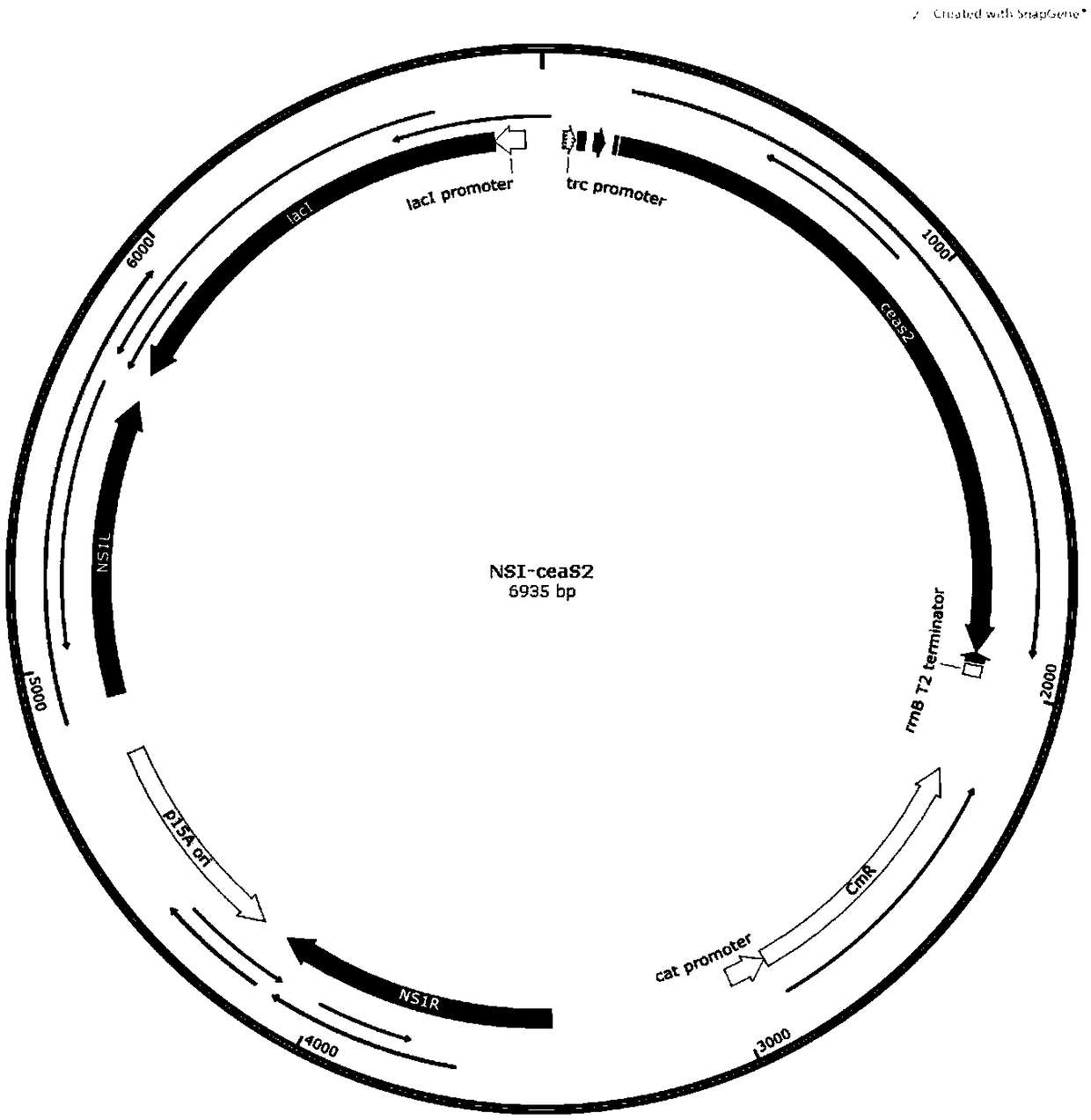Method for synthesizing acrylic acid from cyanobacteria
A technology of acrylic acid and cyanobacteria, applied in the field of synthetic biology, can solve the problems of inability to realize large-scale production, environmental pollution, unsustainability, etc., and achieve the effects of easy industrial transformation, good purity, and easy production cost
- Summary
- Abstract
- Description
- Claims
- Application Information
AI Technical Summary
Problems solved by technology
Method used
Image
Examples
Embodiment 1
[0064] Plasmid construction process: According to the NSI gene sequence of cyanobacterium Syn7942, according to the attached figure 2 The plasmid map in the construction of the integration vector NSI. Then, according to the gene ceaS2 amino acid sequence provided in the present invention, design the nucleic acid sequence of the corresponding gene according to the codon preference of the cyanobacterium Syn7942 cell, send the gene ceaS2 to a commercial company for synthesis, design a homology arm of about 20 bp size, and follow the attached image 3 In the plasmid map, the two genes were constructed on the integration vector NSI using a one-step cloning kit.
Embodiment 2
[0065] Embodiment 2 conversion process:
[0066] 1) Take 2 mL of wild-type Syn7942 with a growth density OD730 of 0.8-1.2 in a centrifuge tube, then centrifuge at 10,000 rpm for 2 min, and remove the supernatant;
[0067] 2) Mix the precipitate in the previous step with 1mL 10mM sodium chloride solution, then centrifuge at 10000rpm for 2min, and remove the supernatant;
[0068] 3) Mix the precipitate in the previous step with 1 mL of sterilized anti-BG11-free liquid medium, then centrifuge at 10,000 rpm for 2 min, and remove the supernatant;
[0069] 4) Mix the precipitate in the previous step with 100 uL of sterilized anti-BG11-free liquid medium, and then add 200 ng of plasmid DNA to it. Thoroughly seal the centrifuge tube with tinfoil (protected from light), then incubate in a shaker at 100 rpm at 30°C for 10 hours;
[0070] 5) Apply all the cyanobacteria in the centrifuge tube in the previous step to the BG11 solid medium containing 25ug / mL chloramphenicol, put the plate...
Embodiment 3
[0072] The verification of embodiment 3 transgenic cyanobacteria and the detection process of product:
[0073] Pick about 10 monoclonal cyanobacterial plaques grown on BG11 solid medium containing 25ug / mL chloramphenicol, insert them into 5mL25ug / mL chloramphenicol BGS1 liquid medium for culture, and extract the genome after the cyanobacteria are cultivated , verify the ceaS2 target gene by PCR with the designed primers, and send the product to sequence by PCR to determine whether the gene sequence is correct; insert the verified correct ceaS2-transformed cyanobacterium Syn7942 into 100mL BG11 liquid medium for light culture, and wait for the OD730 to be 1 , add the substrate p-hydroxyphenylpropionic acid, and add IPTG to induce the expression of two ceaS2 genes. The expressed enzyme uses glyceraldehyde triphosphate or dihydroxyacetone phosphate produced by photosynthesis of cyanobacteria as the substrate to synthesize acrylic acid, and then respectively takes After the induc...
PUM
 Login to View More
Login to View More Abstract
Description
Claims
Application Information
 Login to View More
Login to View More - R&D
- Intellectual Property
- Life Sciences
- Materials
- Tech Scout
- Unparalleled Data Quality
- Higher Quality Content
- 60% Fewer Hallucinations
Browse by: Latest US Patents, China's latest patents, Technical Efficacy Thesaurus, Application Domain, Technology Topic, Popular Technical Reports.
© 2025 PatSnap. All rights reserved.Legal|Privacy policy|Modern Slavery Act Transparency Statement|Sitemap|About US| Contact US: help@patsnap.com



